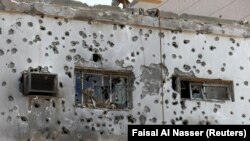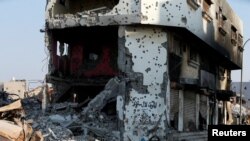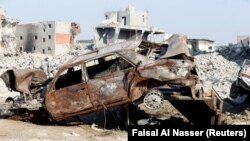After more than three months of bloody clashes, Saudi Arabian forces maintain that they have flushed out almost all of what they call “criminals and terrorists” from the mostly Shi’ite town of Awamiya, in the kingdom’s east.
Thousands of Awamiya residents have been forced to leave their centuries-old homes while Saudi forces demolished some parts of the city.
Human Rights Watch said on August 13 that Saudi security forces had completely surrounded and sealed off Awamiya.
“Saudi authorities should take immediate steps to allow people to safely return home, allow businesses and clinics to reopen, and compensate residents for property damage and destruction caused by security forces,” said Sarah Lea Whitson, HRW’s Middle East director.
The Associated Press reported on June 27 that the demolition began on May 10 and soon caused violence in the streets of the Shi’ite town. Earlier in May, a few other media sources had also reported about the demolitions and the ensuing violence.
Journalists on a government tour of the town on August 9 were the first outside witnesses of the damage caused by the fighting in the otherwise tightly controlled kingdom, a key Western ally and the world's top oil exporter.
Reporters escorted by special forces in armored vehicles saw streets in Awamiya's old quarter transformed into a war zone a world away from the sparkling cityscapes elsewhere in the energy-rich Gulf.
There was no fighting during the tour, although residents reported an explosion and gunfire shortly afterward.
Rusted-out cars lay half-flattened next to wrecked homes pocked with hundreds of bullet holes.
Crudely photocopied portraits of "martyrs" -- one apparently 16 years old -- were tacked on to lamp posts and buildings.
"The land which is mixed with the blood of martyrs gets sufficiently watered by God's light to defeat the mighty," said graffiti along one rubble-strewn street.
Fighting picked up this month when elite forces joined an operation that began in May to tear down the old quarter, known as al-Musawara, to prevent gunmen from using its narrow streets to evade capture.
Casualty figures have not been published, but an Interior Ministry representative said eight members of a police rapid reaction team and four special forces troops had been killed since the latest campaign began.
Residents said nine civilians had been killed in the violence in the past week and more than 20,000 had fled or been evacuated to safer towns and villages nearby.
Activists said five fighters and 23 civilians were killed in the fighting. Among them was a 3-year-old boy, who died on August 9 after being shot in his family's car by an armored vehicle in Awamiya in June.
The ministry representative said the old quarter had been empty except for "terrorists" for the past six months, but the security forces had to wait until families left adjacent areas before they could begin their final push.
The authorities say they are clearing the area to build an attractive district of shopping centers, office buildings, green spaces, and fountains in place of al-Musawara.
"We informed everyone in the community there would be development stages for several areas in Qatif, starting with Musawara," said Esam Abdullatef Almulla, the region's acting mayor.
He dismissed concerns raised by United Nations experts in April that the demolition of the 400-year-old neighborhood threatened Awamiya's cultural heritage, saying the majority of the community accepted the project.
"Of course, we didn't get approval from everyone, but most Qatif and Awamiya residents wanted to see their neighborhoods developed," Almulla said.
The government compensated residents who had to leave with more than 800 million riyals ($200 million), he said, and has demolished about 80 out of 488 homes in Musawara.
The town was also the center of a short-lived protest movement in 2011 inspired by the Arab Spring.
One of the movement's leaders, Shi’ite religious figure Nimr al-Nimr, was executed in January 2016 on a terrorism charge.
Al-Nimr’s execution led to angry protests in Iran, while a mob stormed the Saudi Embassy in Tehran, ransacking and setting it on fire.
Iranian authorities tried to attribute the attack to “rogue” elements, but the Saudis dismissed that and severed diplomatic relations with Tehran.
Iran has been largely silent though on the events in Awamiya. This can be due to a reported Saudi overture to reduce tensions with Iran. Iraqi interior minister visiting Tehran over the weekend, told local media that Riyadh has asked Iraq to act as a mediator with Tehran.
The Shi’ite community, which makes up an estimated 10 percent to 15 percent of Saudi Arabia's population of 32 million, has long complained of marginalization at the hands of the Sunni-dominated authorities.




